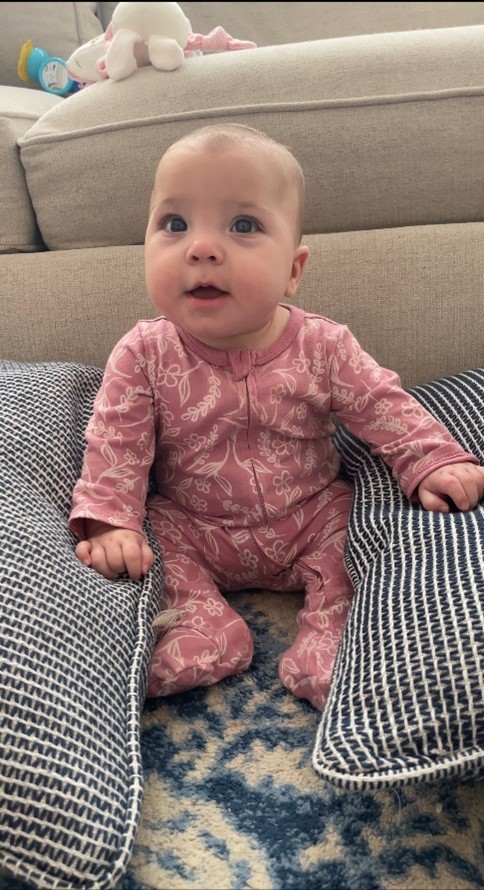Cookies and Privacy
Daytot processes information about your visit using cookies to improve site performance, facilitate social media sharing and offer advertising tailored to your interested.
By continuing to browse our site, you agree to the use of these cookies. For more information see our
Privacy & Cookie Policy.
Activities for Early and Experienced Sitters

Sitting in gross motor development is a marker of progression of postural control, balance, and strength in the body. A baby has now learned to anchor his pelvis to the floor, balance his trunk and head over his bottom, and use his arms to reach and play with toys without falling over! What an accomplishment! Helping your baby learn to sit independently can be challenging as they frequently fall over and haven’t learned to get back up just yet.
Here are some fun activities to do with your baby to help them learn how to sit more independently:
-
Place your child in active sitting on the floor with boundaries around them, like pillows or rolled blankets, to give them cues to return upright. It also prevents them from falling all the way to the ground and allows them to learn how use their arms to keep their balance.
-
For more advanced sitting, take your nursing pillow (or a rolled blanket or towel) and place around baby’s hips to support those little shifts side to side. This allows baby some cues to correct back to upright without completely losing their balance! If baby needs a little more help, you can flip that towel or pillow across their lap.
-
Elevate toys off the floor! Baby’s vision dictates where her head goes, which dictates where her trunk goes, which helps the rest of the body move. By bringing toys off the floor, baby must look higher which makes her extend her back more and sit up straighter! Be sure to be nearby in case she loses her balance!
For babies who have mastered sitting – it’s now time to connect this skill with all those great tummy skills! Baby now has the chance to bridge crawling with sitting! It’s crucial for baby to learn how to transition between these two skills for more independent movement.
Here are some easy ways to progress past those super sitting skills:
-
Start placing toys OUTSIDE of baby’s reach. While it may have been easy to put baby in sitting on the floor and place a toy in his lap, it’s now time to make them work for it! Place toys just slightly outside their reach to encourage a little weight shift. As baby gets more control with this movement, it will build strength and confidence for a steady lowering to their belly!
-
Help baby bear weight through their hands just outside each leg. This is a great transition position as the trunk is now rotating to get ready for a crawling position. Baby’s leg may or may not turn towards the direction they’re moving, so you can help position it if they are comfortable. If not, just work on reaching far enough so that baby can really push with those arms!
-
Place baby by a couch cushion or small box with a toy on top. Encourage baby to go for the toy – you’ll see baby learn how to transition out of sitting to their bellies with a little help from the cushion or box. Feel free to help baby tuck their knees under their hips to mimic that crawling position when they play!
As always, supervise baby with any new skills or set-ups. It’s not unusual for baby to start to lose their balance during these new movements – so give lots of praise and practice to help them learn and master these skills!
Blogger Profile
Haley McDonald, PT, DPT, is a Board-Certified Pediatric Clinical Specialist in Atlanta, Georgia. She owns Pathway Pediatric Therapy Services and is an adjunct professor at Emory University’s Doctor of Physical Therapy Program. You can follow Haley on Socials @pathwaypediatrictherapysvcs or at www.pathwaypediatrictherapy.com
